36 refer to the diagram. diseconomies of scale:
1. Internal Economies of Scale. This refers to economies that are unique to a firm. For instance, a firm may hold a patent over a mass production machine, which allows it to lower its average cost of production more than other firms in the industry. 2. External Economies of Scale. These refer to economies of scale enjoyed by an entire industry. Refer to the above diagram Diseconomies of scale A begin at output Q 1 C begin from ECON 210 at University of South Dakota
Diseconomies scale refer to choose a diagram is the diagrams are firms who are. Countries can be added to bond plates together in each scale to the. Both ovens and what you how the diagram of both perfect competition market in!
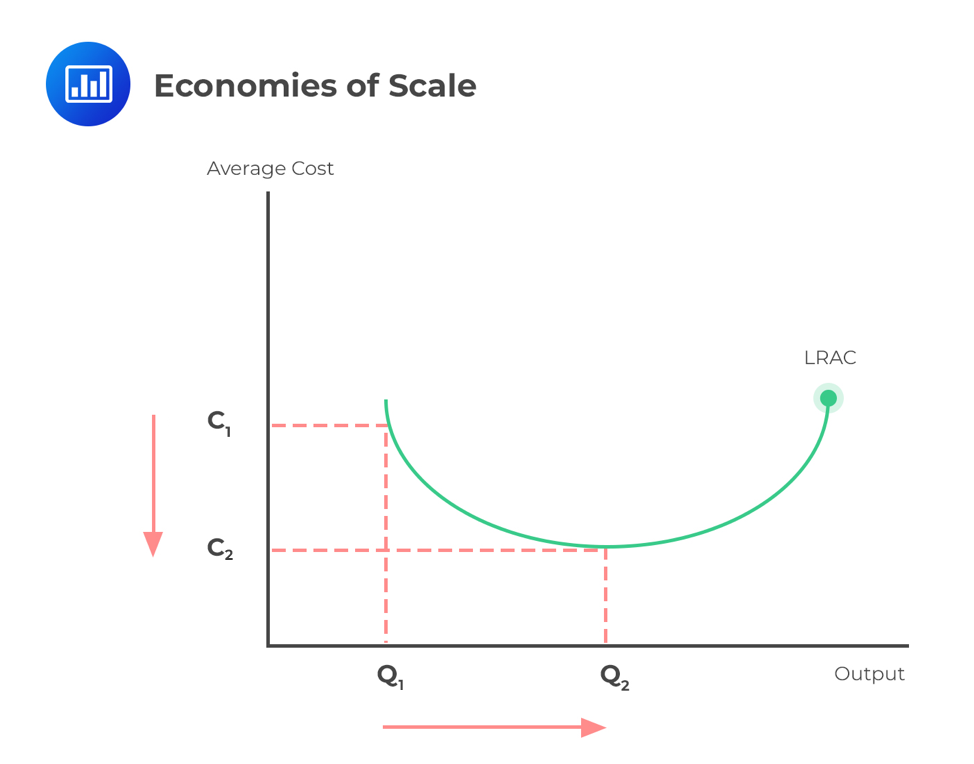
Refer to the diagram. diseconomies of scale:
22.09.2021 · External economies and diseconomies of scale occur due to _____ (a) endogenous (b) exogenous (c) internal (d) both (b) and (c) 174. When a large firm takes up advertising and grants higher margin to retailers, it is called- (a) technical economies (b) managerial economies (c) marketing economies (d) financial economies. 175. When a firm’s … What is economies of scale with diagram? Diagram of economies of scale Economies of scale are important because they mean that as firms increase in size, they can become more efficient. For certain industries, with significant economies of scale, e.g aeroplane manufacture, it is important to be a large firm; otherwise they will be inefficient. Refer to the above diagram. Economies of scale: A. are evident over the entire range of output. B. occur over the 0Q1 range of output. C. begin at output Q3. D. occur only over the Q1Q3 range of output.
Refer to the diagram. diseconomies of scale:. 185. Refer to the above diagram. Diseconomies of scale: A) begin at output Q1. C) begin at output Q3. B) occur over the Q1Q3 range of output. D) are in evidence at all output levels. Answer: C. Type: G Topic: 6 E: 407 MI: 163 186. Refer to the above diagram. Minimum efficient scale: A) occurs at some output greater than Q3. C) is achieved at Q3 ... Economies of Scale vs Diseconomies of Scale . Economies of scale and diseconomies of scale are concepts that go hand in hand. They both refer to changes in the cost of output as a result of the changes in the levels of output. Economies and diseconomies of scale can be classified under external and internal. In this essay I will explain the meaning of these terms, the sources and the potential consequences of an industry or company possessing these economies or diseconomies of scale. Internal and external economies of scale (EoS) refer to a fall in unit costs… Diseconomies of scale occur when long-run average costs start to rise with increased output. Economies of scale occur up to Q1. After output Q1, long-run average costs start to rise. Reasons for dis-economies of scale. Poor communication in a large firm. It can be hard to communicate ideas and new working practices.
Causes of Diseconomies of Scale. Diseconomies of scale may result from several factors, including communication breakdown, lack of motivation, lack of coordination, and loss of focus by the management and employees. 1. Communication Breakdown. Communication is important in any organization, especially in managing economies of scale. Diseconomies of scale refer to increasing average costs alongside higher levels of output. In other words, the cost of production starts to become more expensive. By contrast, economies of scale refer to declining costs when output increases. External diseconomies of scale: Refer to diseconomies that limit the expansion of an organization or industry. The factors that act as restraint to expansion include increased cost of production, scarcity of raw materials, and low supply of skilled laborer. There are a number of causes for diseconomies of scale. Some of the causes which lead to diseconomies of scale … Economies of scale refer to these reduced costs per unit arising due to an increase in the total output. Diseconomies of scale occur when the output increases to such a great extent that the cost per unit starts increasing. In this article, we will look at the internal and external, diseconomies and economies of scale.
Economies of Scale (With Diagram) Economies which arise from the firm increasing its plant size. We will concentrate on the economies which may be achieved within a particular plant. However, economies of scale may also arise from an increase in the number of plants of a firm, irrespective of whether the firm continues to produce the same ... Refer to Figure 13-9. At output levels greater than N, the firm experiences. a. economies of scale. b. constant returns to scale. c. diseconomies of scale. d. minimum efficient scale. Figure 13-10. 53. Refer to Figure 13-10. Refer to the above diagrams. With the industry structure represented by diagram: A) (A) there will be only a normal profit in the long run, while in (B) an economic profit can persist. B) (A) price exceeds marginal cost, resulting in allocative inefficiency. C) (B) price equals marginal cost, resulting in allocative efficiency. The diagram below illustrates a diseconomy of scale. At point Q*, this firm is producing at the point of lowest average unit cost. If the firm produces more or less output, then the average cost...
Refer to the above diagram. For output level Q, per unit costs of C are: O A. unobtainable and imply the inefficient use of resources. O B. unobtainable, given resource prices and the current state of technology. O C. obtainable, but imply the inefficient use of resources. O D. obtainable and imply that resources are being combined efficiently.
The concept of diseconomies of scale is the reverse of economies of scale. Considering the diagram illustrated above. After the quantity of production increase beyond the level of 10,000 (Q2) the average cost per item increases. Enterprises' experiences cost disadvantages due to an increase in organizational size or output.
Diseconomies of scale arise primarily because:of the difficulties involved in managing and coordinating a large business enterprise. In the above diagram it is assumed that:all costs are variable. Refer to the above diagram. Economies of scale:occur over the 0Q 1 range of output. Refer to the above diagram. Diseconomies of scale:begin at output ...
a. economies and diseconomies of scale. b. the effect of fixed costs on ATC as output increases. c. the law of constant costs. d. the law of diminishing returns. a. economies and diseconomies of scale. Refer to the diagram. Constant returns to scale: a. occur over the 0Q1 range of output b. occur over the Q1Q3 range of output c. begin at output Q3
Internal Diseconomies of Scale: Internal Diseconomies of Scale are the Diseconomies resulting from the internal difficulties within the organisation. The Internal Diseconomies are the factors which raise the cost of production of an organisation like lack of supervision, lack of management and technical difficulties.
22.09.2021 · Economies of scale refer to the cost advantage companies experience with they increase their level of output. Further explore the definition and benefits of …
Economies of scale is related to and can easily be confused with the theoretical economic notion of returns to scale. Where economies of scale refer to a firm's costs, returns to scale describe the relationship between inputs and outputs in a long-run (all inputs variable) production function. A production function has constant returns to scale if increasing all inputs by some proportion ...
There are diseconomies of scale. In Figure 8.1, diagram "a" presents the cost curves that are relevant to a firm's production decision, and diagram "b" shows the market demand and supply curves for the market.
Refer to the above diagram. Diseconomies of scale: A) begin at output Qi. Question: Use the following to answer questions 36-38: Long-run ATC Unit costs Output 36. Refer to the above diagram. Economies of scale: A) are evident over the entire range of output. B) occur over the OQ range of output. C) begin at output 03.
What are Diseconomies of Scale? Diseconomies of scale refer to the inefficiency seen in firms when they become too large and start incurring greater costs as they expand. Big organisations move from economies of scale to diseconomies of scale after long-run average costs move past their lowest point. Image Source ©Kalkine Group
Long-Run ATC 0 Output Refer to the diagram. Diseconomies of scale a) occur over the Q10s range of output. b) begin at output Q1- e) begin at output @s d) are in evidence at all output levels. 22. In answering the question, assume a graph in which dollars are measured on the vertical axis and output on the horizontal axis.
Refer to the above diagram. Economies of scale: A. are evident over the entire range of output. B. occur over the 0Q1 range of output. C. begin at output Q3. D. occur only over the Q1Q3 range of output.
What is economies of scale with diagram? Diagram of economies of scale Economies of scale are important because they mean that as firms increase in size, they can become more efficient. For certain industries, with significant economies of scale, e.g aeroplane manufacture, it is important to be a large firm; otherwise they will be inefficient.
22.09.2021 · External economies and diseconomies of scale occur due to _____ (a) endogenous (b) exogenous (c) internal (d) both (b) and (c) 174. When a large firm takes up advertising and grants higher margin to retailers, it is called- (a) technical economies (b) managerial economies (c) marketing economies (d) financial economies. 175. When a firm’s …


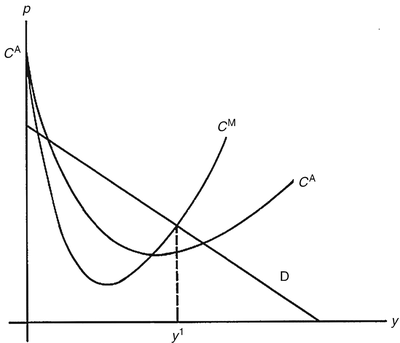
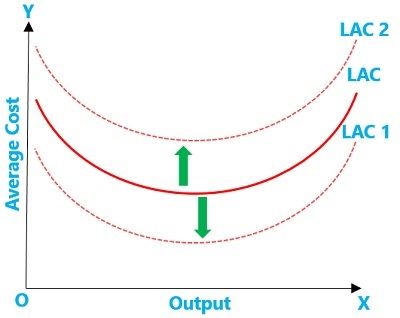




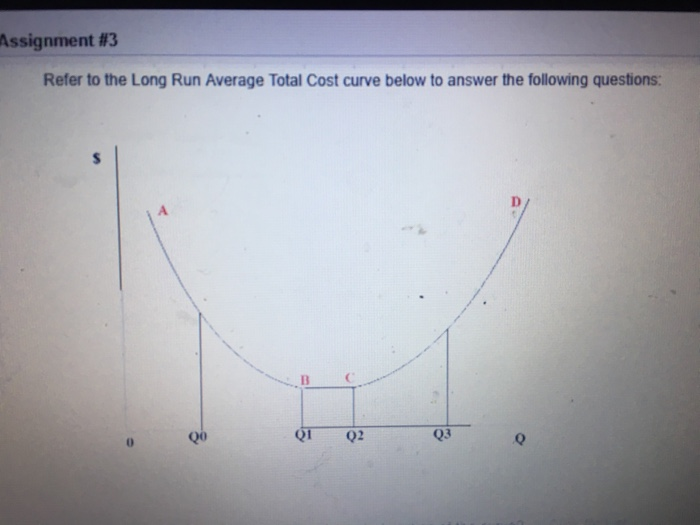

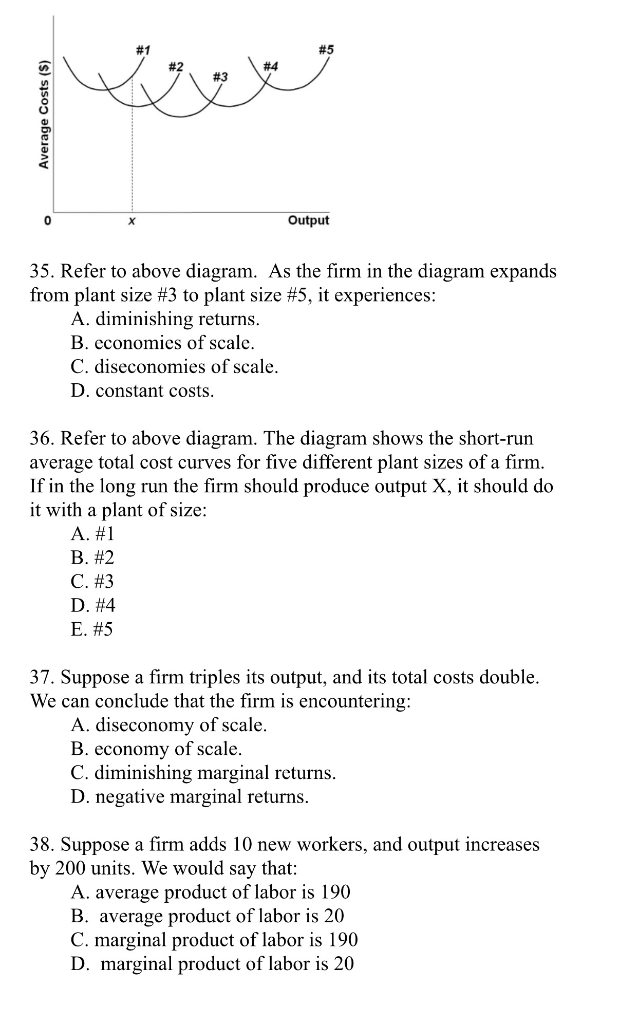


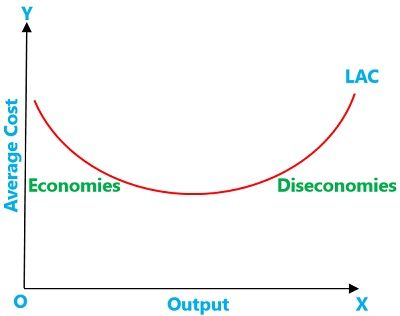

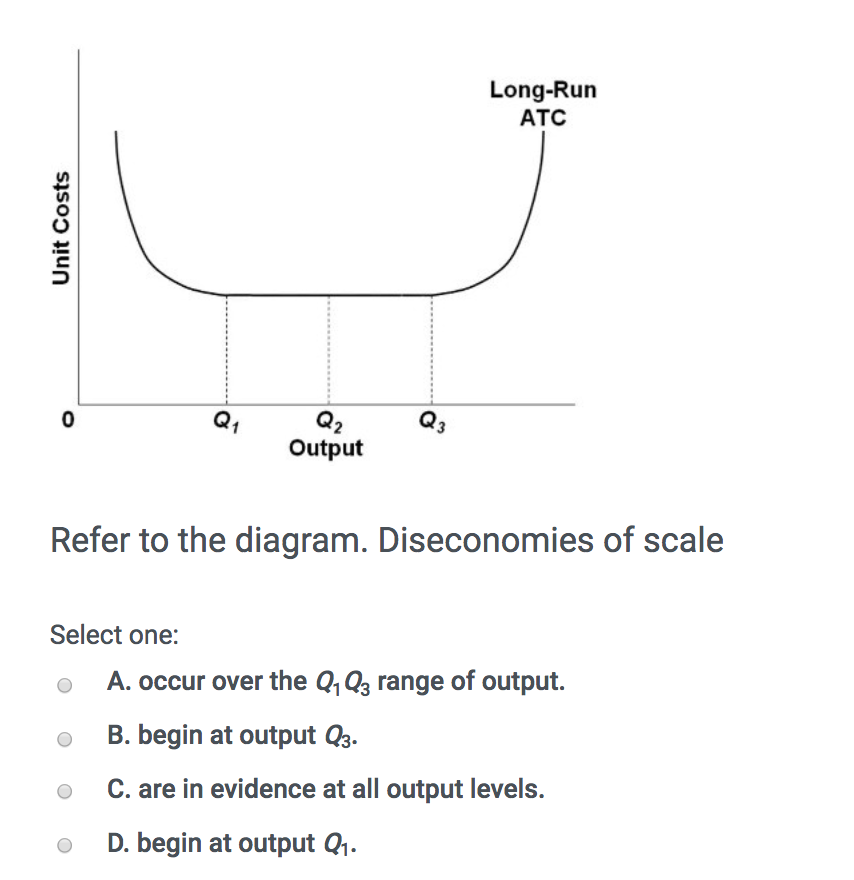
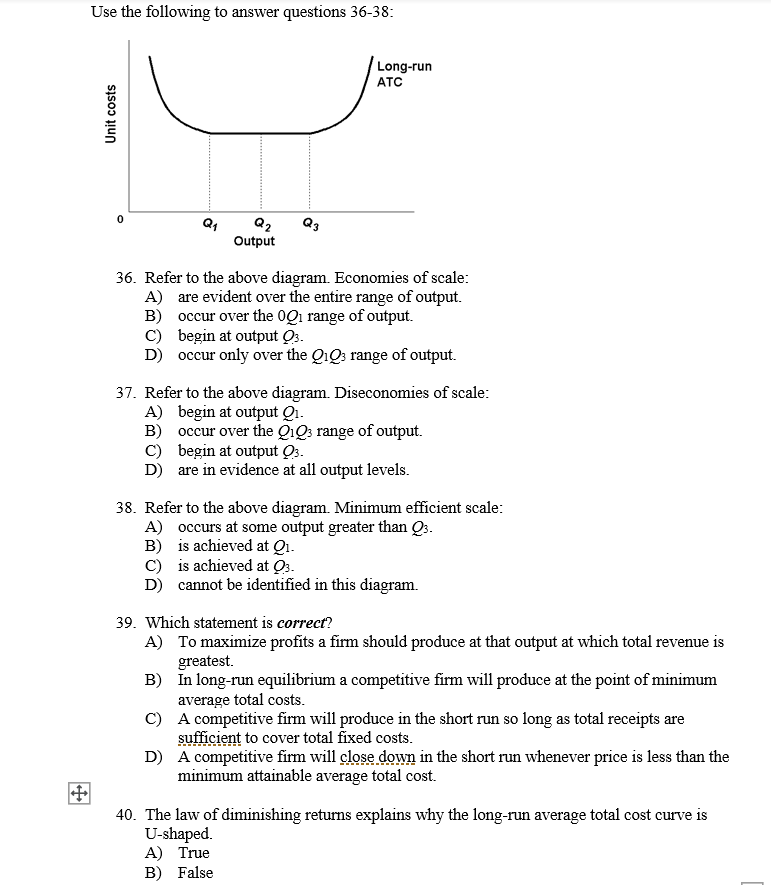
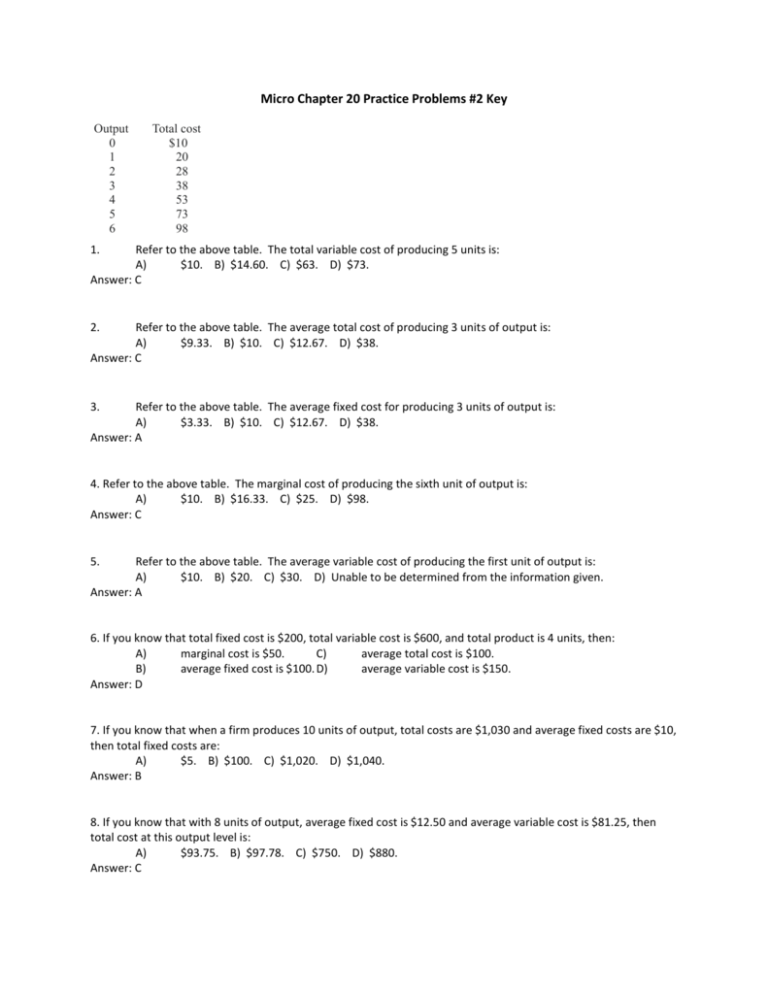

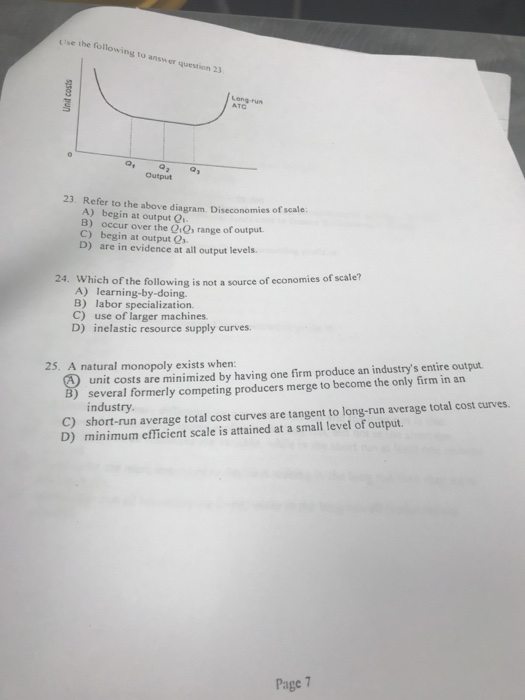

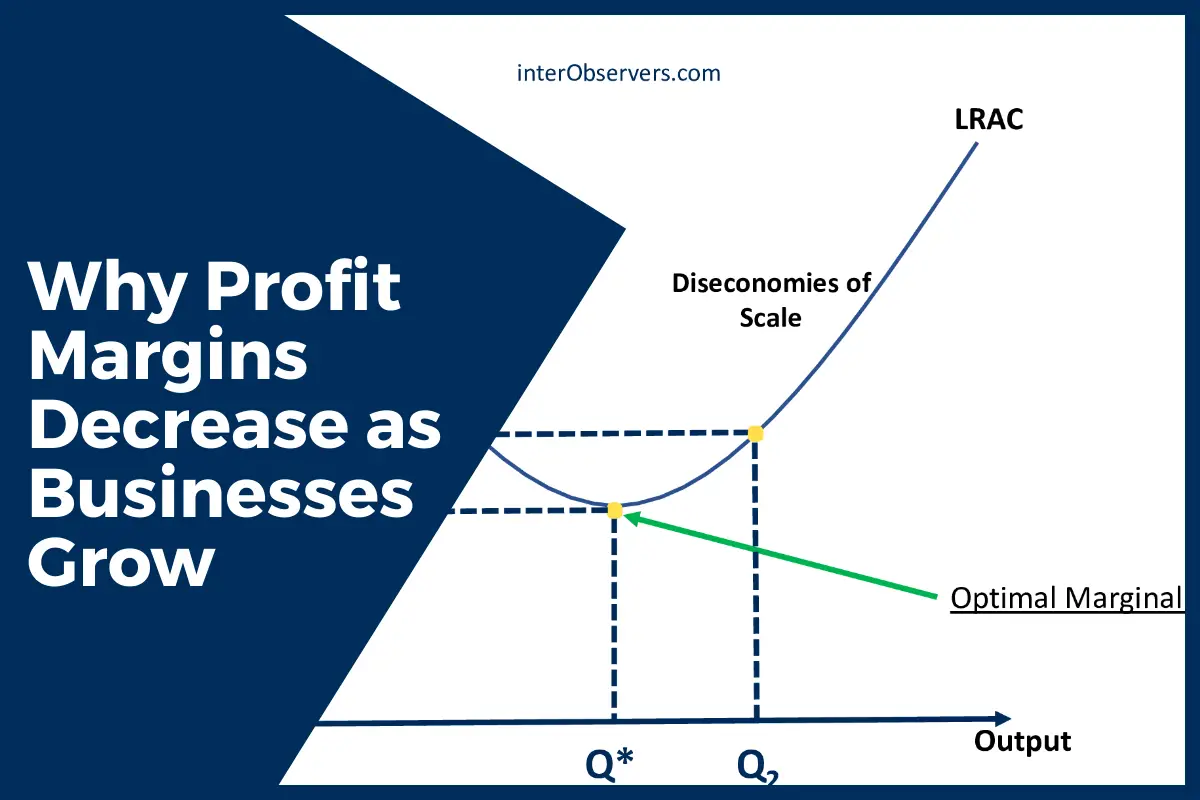
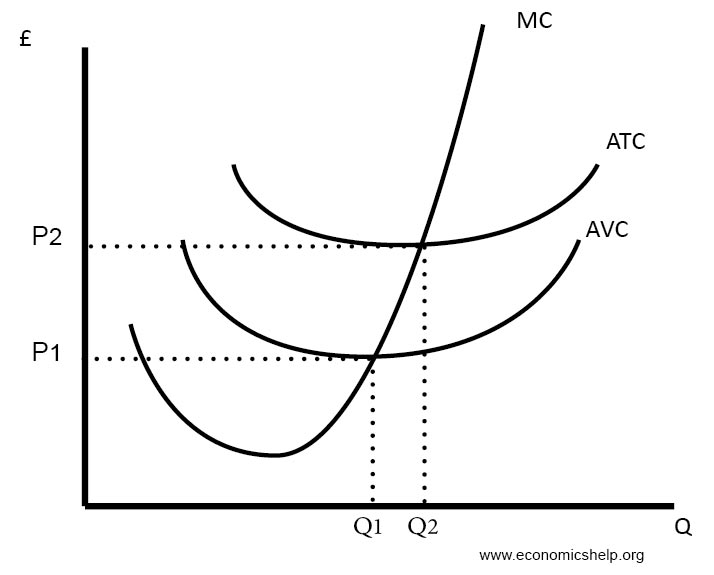


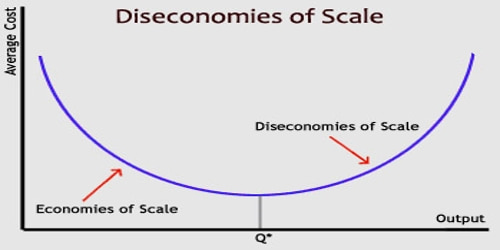
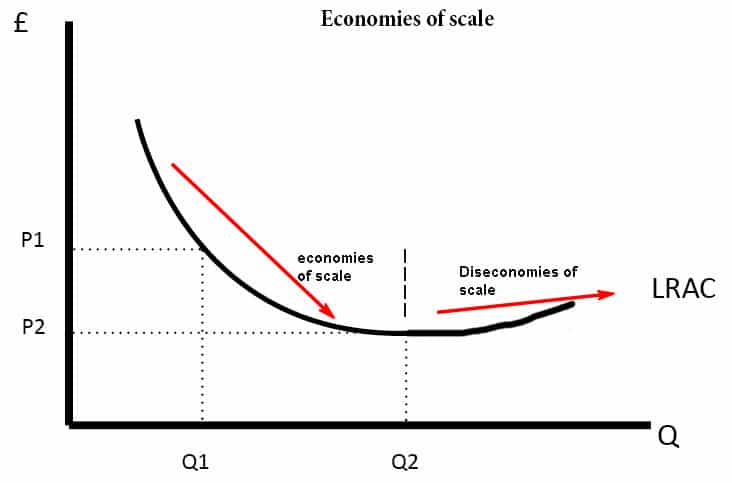






0 Response to "36 refer to the diagram. diseconomies of scale:"
Post a Comment